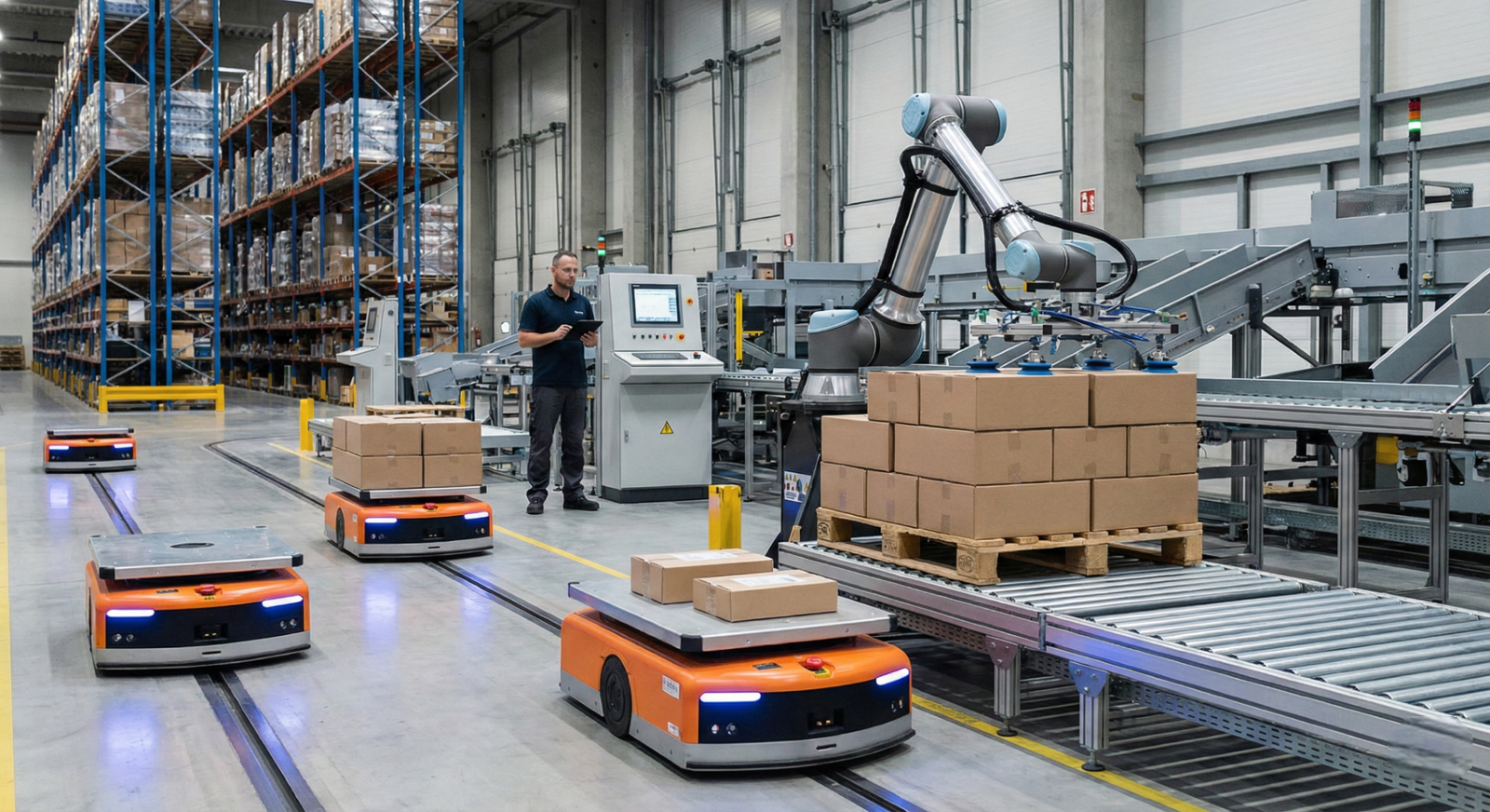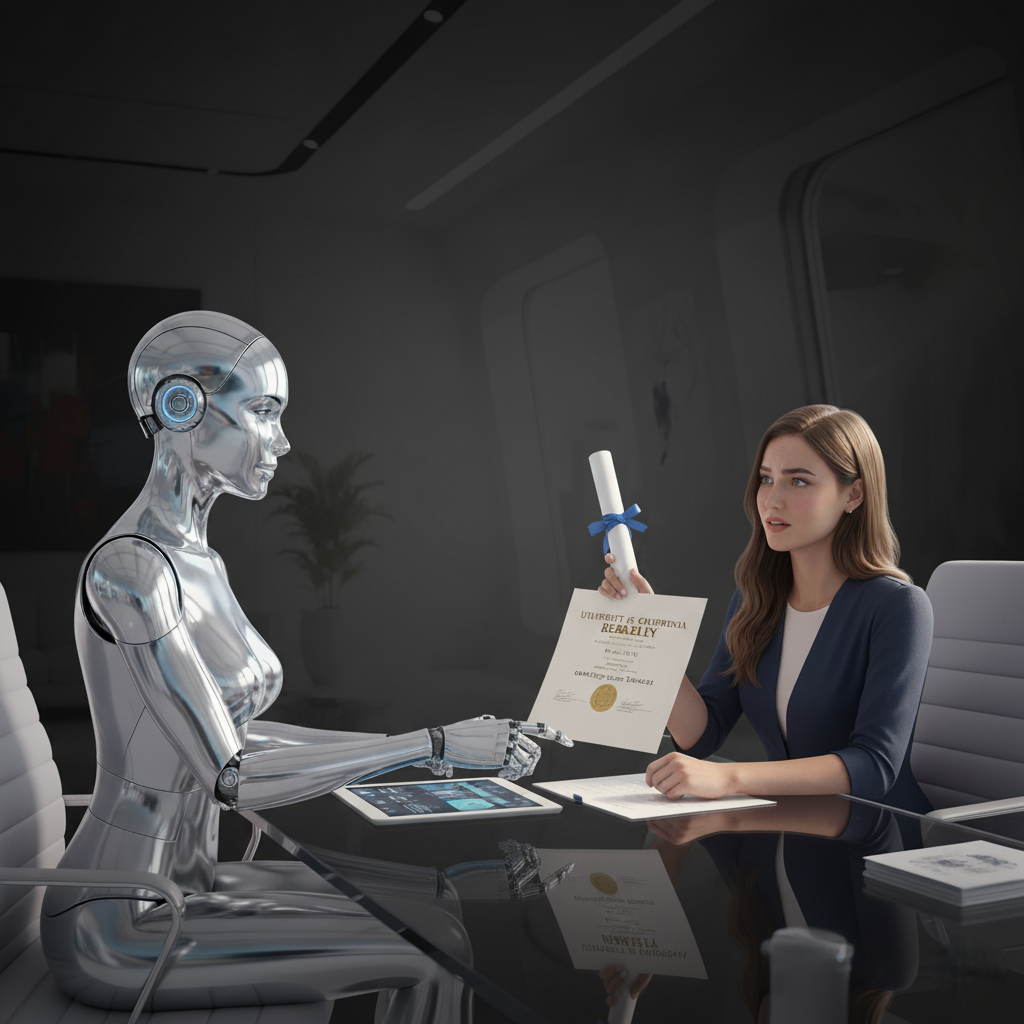Are you curious about artificial intelligence (AI) but feel overwhelmed by the technical terms? You’re not alone! AI is a rapidly growing field, and its vocabulary can seem like a foreign language. But don’t worry – this guide is here to help you decode the jargon and grasp the core concepts.
Key Takeaways:
- Decode AI Jargon: This guide is aimed at equipping you with the essential vocabulary to confidently discuss artificial intelligence.
- Navigate the AI Landscape: Gain a foundational understanding of AI concepts, applications, and potential impact on various industries.
- Embrace AI’s Potential: Discover how AI is transforming our world, from chatbots and art generation to business solutions and ethical considerations.
What is AI?
At its heart, AI is a branch of computer science focused on creating systems that can perform tasks that normally require human intelligence. This includes things like recognizing patterns, making decisions, understanding language, and even creating art.
Now, you might have seen “AI” slapped onto all sorts of products and services, but it’s important to understand that not everything labeled “AI” is truly intelligent. Some companies use the term as a marketing buzzword, so it’s important to be able to separate hype from reality.
Why Should You Care About AI?
AI is already transforming industries like healthcare, finance, and entertainment. Understanding AI terminology empowers you to:
- Communicate Clearly: Talk about AI with colleagues, friends, or even potential employers without getting lost in the jargon.
- Make Informed Decisions: Evaluate AI-powered products and services with a critical eye.
- Navigate the Future: AI is only going to become more prevalent, so understanding it is key to staying ahead of the curve.
Core AI Concepts Demystified
- Machine Learning (ML): Think of ML as the engine behind many AI applications. It’s the process of training computer programs to learn from data, so they can improve their performance over time without being explicitly programmed for every scenario.
- Artificial General Intelligence (AGI): This is the holy grail of AI research – a machine that can perform any intellectual task a human can. It’s still a theoretical concept, but the progress is exciting!
- Neural Networks: Inspired by the human brain, neural networks are complex systems that can recognize patterns in data. They’re used for everything from image recognition to language translation.
How Does AI Learn?
AI models learn by being fed massive amounts of data. This data can be anything from text and images to music and video. The type of data used depends on the specific task the AI is being trained for.
- Text Data: Used for chatbots, language translation, and more.
- Image Data: Used for facial recognition, medical imaging, and self-driving cars.
- Music Data: Used for music recommendation systems and automated music composition.
- Video Data: Used for video analysis, surveillance, and even video game AI.
During training, AI models adjust their internal settings (called parameters) to get better at their assigned tasks. It’s like tweaking the knobs on a radio to find the perfect station.
Natural Language Processing (NLP): AI That Understands Language
NLP focuses on enabling computers to understand and process human language. This is what powers:
- Chatbots: Like OpenAI’s ChatGPT, which can hold surprisingly human-like conversations.
- Speech Recognition: Technology like OpenAI’s Whisper, which transcribes spoken words into text.
- Language Translation: Services like Google Translate, which break down language barriers.
Generative AI: AI as a Creator
Generative AI models can create new content, like text, images, or music. ChatGPT, for example, can write poems or generate code. However, they can also sometimes produce inaccurate or nonsensical output, a phenomenon known as “hallucination.”
Advanced AI Concepts
- Deep Learning: A type of machine learning that uses neural networks with many layers to model complex patterns in data. This is what powers many advanced AI applications.
- Retrieval-Augmented Generation (RAG): This technique combines information retrieval (searching for relevant information) with generative AI to create more accurate and informative responses.
Biases in AI: A Critical Challenge
AI models can inherit biases from the data they’re trained on, leading to unfair or discriminatory outcomes. Addressing these biases is crucial to ensure that AI is used ethically and responsibly.
Key Players in the AI World
The AI landscape is constantly evolving, with several major players driving innovation:
- OpenAI: Pioneers in natural language processing with ChatGPT and the GPT models.
- Google: Developing the Gemini AI assistant and a range of AI models.
- Meta: Contributing the open-source LLaMA large language model.
- Apple: Integrating AI into its products through Apple Intelligence.
- Anthropic: Focused on building safe and ethical AI with its Claude language model.
- Microsoft: A major player in the AI field, integrating AI into its products like Microsoft 365 through the Co-pilot feature and partnering with OpenAI to drive research and development.
AI Chatbots: Your Digital Companions
AI chatbots have become increasingly sophisticated, capable of handling customer service inquiries, providing information, and even offering companionship. Here are some popular examples:
- ChatGPT (OpenAI): A versatile chatbot that can answer questions, generate creative text formats, and even engage in casual conversation.
- Replika: An AI companion designed to provide emotional support and companionship through personalized conversations.
- Woebot: A mental health chatbot that uses cognitive behavioral therapy techniques to help users manage their mental well-being.
AI Image Generation: From Text to Pixels
AI image generation models have made significant strides, capable of creating realistic images from text descriptions. This technology has applications in art, design, and even marketing. Some notable examples include:
- DALL-E (OpenAI): A powerful image generation model that can create original images from text prompts, even combining unrelated concepts in surprising ways.
- Midjourney: An AI art generator that allows users to create stunning visual art through text prompts, with a focus on artistic styles and aesthetics.
- Stable Diffusion: An open-source image generation model known for its versatility and ability to generate high-quality images with various styles.
AI in Visual Art: A New Era of Creativity
AI is revolutionizing the art world, with AI-powered tools enabling artists to explore new creative possibilities and push the boundaries of artistic expression. AI algorithms can generate original artworks, assist with creative processes, and even create interactive and immersive experiences. Some notable applications include:
- Artbreeder: A platform that allows users to combine and evolve images using AI to create unique and surprising artistic outputs.
- Deep Dream Generator: A tool that uses neural networks to enhance and transform images, often creating surreal and dreamlike results.
- Runway ML: A platform that provides a variety of AI tools for artists, including image generation, style transfer, and motion capture.
AI in Film and Video: The Future of Storytelling
AI is poised to transform the film and video industry, from scriptwriting and production to post-production and distribution. AI-powered tools can automate repetitive tasks, generate realistic special effects, and even create personalized movie recommendations. Some potential future applications include:
- AI-generated scripts: AI could be used to generate original screenplays or assist writers with brainstorming and plot development.
- AI-directed films: AI could potentially direct films, making creative decisions about camera angles, lighting, and editing.
- AI-generated actors: Virtual actors created with AI could perform in films, potentially reducing costs and opening up new creative possibilities.
AI in Video Creation: Democratizing Content Production
AI is making video creation more accessible than ever before, with tools that can automate editing, generate voiceovers, and even create entire videos from scratch. This is democratizing content creation, allowing individuals and businesses to produce high-quality videos without extensive technical skills. Some popular AI video creation tools include:
- Visla: An AI-powered video creation platform that empowers teams and individuals to effortlessly create professional-quality videos from various content types, including blog posts, scripts, screen recordings, and more, complete with visuals, voiceovers, and subtitles.
- Lumen5: A tool that transforms blog posts and articles into engaging videos, automatically adding music and visuals.
- Descript: A video and audio editing tool that uses AI to transcribe audio, edit videos based on text transcripts, and generate realistic voiceovers.
AI in Business: Transforming Industries
AI is not just transforming the creative fields; it’s revolutionizing how businesses operate across various industries. AI-powered tools can automate repetitive tasks, improve decision-making, enhance customer experiences, and drive innovation. Here are some examples:
- Customer Service: AI chatbots and virtual assistants can handle customer inquiries, provide support, and resolve issues efficiently.
- Marketing: AI can personalize marketing campaigns, analyze customer behavior, and predict trends to optimize marketing strategies.
- Finance: AI is used in fraud detection, algorithmic trading, and risk assessment, improving efficiency and accuracy in financial operations.
- Healthcare: AI is transforming healthcare with applications like medical image analysis, drug discovery, and personalized treatment plans.
AI Ethics and Governance: Shaping a Responsible Future
As AI becomes more powerful and pervasive, ethical considerations and governance frameworks are essential to ensure its responsible and beneficial use. Key areas of focus include:
- Bias and Fairness: Ensuring AI systems are fair and unbiased, avoiding discrimination and promoting equal opportunity.
- Transparency and Explainability: Making AI models transparent and their decision-making processes explainable, building trust and accountability.
- Privacy and Security: Protecting user data and ensuring the privacy and security of AI systems.
- Job Displacement and Economic Impact: Addressing the potential impact of AI on employment and developing strategies for workforce adaptation and reskilling.
- Existential Risk: Exploring the potential risks of advanced AI and developing safeguards to mitigate those risks.
AI and the Environment: A Double-Edged Sword
AI’s impact on the environment is complex. On one hand, AI can be a powerful tool for addressing environmental challenges. It can optimize energy consumption, improve resource management, and help develop sustainable solutions. For example, AI-powered systems can monitor deforestation, predict natural disasters, and optimize agricultural practices.
On the other hand, the development and deployment of AI can have a significant carbon footprint. Large-scale AI models require vast amounts of computational power, which translates to high energy consumption and greenhouse gas emissions. Additionally, the production of the hardware required for AI can have environmental consequences due to resource extraction and waste generation.
It’s crucial to balance the potential benefits of AI for the environment with its potential drawbacks. Research into energy-efficient AI algorithms, the use of renewable energy sources for AI infrastructure, and responsible disposal of AI hardware are essential steps towards sustainable AI development.
AI and Education: Personalized Learning and Intelligent Tutoring
AI is transforming education by enabling personalized learning experiences and providing intelligent tutoring systems. AI-powered platforms can adapt to individual student’s needs, providing customized content, feedback, and support. This can improve learning outcomes, increase engagement, and make education more accessible to learners of all backgrounds.
Some examples of AI in education include:
- Adaptive learning platforms: These platforms use AI algorithms to personalize learning paths based on students’ strengths, weaknesses, and learning styles.
- Intelligent tutoring systems: These systems provide individualized tutoring and feedback, adapting to students’ progress and helping them overcome challenges.
- Automated grading and feedback: AI can automate grading tasks, freeing up teachers’ time for more meaningful interactions with students.
- Virtual reality and augmented reality: AI-powered VR and AR experiences can create immersive and interactive learning environments.
The Future of Work: Adapting to an AI-Powered World
AI is changing the nature of work, automating repetitive tasks and augmenting human capabilities. While this can lead to increased productivity and efficiency, it also raises concerns about job displacement and the need for new skills.
To thrive in the AI-powered workplace, individuals need to focus on developing skills that complement AI, such as creativity, critical thinking, complex problem-solving, and emotional intelligence. Lifelong learning and adaptability will be key to navigating the changing job landscape.
Embracing the Potential of AI While Mitigating Risks
While the transformative power of AI is undeniable, it’s equally important to address the potential risks and challenges associated with its rapid advancement. By proactively tackling these issues, we can harness the benefits of AI while ensuring a safe and equitable future for all.
Deepfakes and Misinformation: AI-generated deepfakes, realistic but fabricated media, pose a significant threat to truth and trust. Detecting and combating deepfakes is crucial to maintain the integrity of information and prevent the spread of misinformation.
Weaponization of AI: The potential use of AI in autonomous weapons systems raises ethical concerns about the implications for warfare and global security. International collaboration and regulations are needed to prevent the misuse of AI for harmful purposes.
Socioeconomic Inequality: The unequal distribution of AI’s benefits could exacerbate existing socioeconomic disparities. Ensuring equitable access to AI education and resources is essential for a just and inclusive AI-powered future.
AI Safety and Control: As AI systems become more sophisticated, ensuring their safety and control becomes increasingly important. Research into AI safety measures, including fail-safes, transparency, and human oversight, is crucial to prevent unintended consequences and ensure that AI remains aligned with human values.
The Path Forward: A Collaborative Approach
Navigating the complexities of AI requires a collaborative approach involving researchers, policymakers, industry leaders, and the public. Open dialogue, interdisciplinary collaboration, and ethical considerations should be at the forefront of AI development and deployment.
The AI Journey Continues
The world of AI is vast and ever-evolving. This guide has provided a foundation for understanding AI jargon and exploring the core concepts and potential impacts of this transformative technology.
As you continue your AI journey, remember to stay informed, engage in discussions, and be part of the conversation shaping the future of AI. By embracing AI’s potential while mitigating its risks, we can create a world where AI truly serves as a tool for good, benefiting all of humanity.
Remember: The future of AI is in our hands. By staying informed, engaged, and responsible, we can ensure that AI is a force for good, driving innovation, improving lives, and creating a more equitable and sustainable future for all.
Glossary of Main Terms
- Algorithm: A set of rules or instructions that a computer follows to solve a problem or complete a task.
- Artificial General Intelligence (AGI): The hypothetical ability of an AI system to understand or learn any intellectual task that a human being can.
- Artificial Intelligence (AI): The simulation of human intelligence processes by machines, especially computer systems. This encompasses learning, reasoning, problem-solving, perception, and language understanding.
- Bias: In AI, systematic errors or unfairness in a model’s predictions due to flaws in the data or training process.
- Chatbot: A computer program designed to simulate conversation with human users, often used for customer service or information retrieval.
- Data: Information that is collected and used to train AI models. This can be text, images, numbers, or other types of information.
- Deep Learning: A subset of machine learning that uses neural networks with many layers to model complex patterns in data.
- Deepfake: A video, image, or audio clip that has been manipulated using AI to show someone saying or doing something that they did not actually say or do.
- Generative AI: AI that creates new content, such as text, images, or music.
- Hallucination: When an AI model generates inaccurate or nonsensical information.
- Inference: The process of using a trained AI model to make predictions or generate output.
- Machine Learning (ML): A subset of AI that involves training algorithms on data to improve their performance over time without being explicitly programmed.
- Model: A mathematical representation of a system or process that is used to make predictions or decisions.
- Natural Language Processing (NLP): The field of AI concerned with the interaction between computers and human language.
- Neural Network: A computer system modeled on the human brain and nervous system.
- Parameter: An internal setting of an AI model that is adjusted during training to improve its performance.
- Retrieval-Augmented Generation (RAG): A technique that combines information retrieval (searching for relevant information) with generative AI to create more accurate and informative responses.
Additional Resources:
- What is Artificial Intelligence? (IBM): A beginner-friendly explanation of AI with examples of real-world applications.
- AI Cheat Sheet (The Verge): AI is confusing — here’s your cheat sheet
- Artificial Intelligence (Wikipedia): A comprehensive overview of AI, its history, different approaches, and applications.
- A Beginner’s Guide to Neural Networks and Deep Learning (Pathmind): A comprehensive guide on neural networks and deep learning, explaining the concepts and their applications.
- Natural Language Processing (NLP): What It Is and Why It Matters (SAS): An overview of NLP and its applications in various industries.
- This is how AI image generators work (The Washington Post): An explainer on how AI image generators like DALL-E and Stable Diffusion create images from text prompts.





